Apple Maps is my go-to choice for directions — here's how Apple Intelligence could make it even better
Here's how turn-by-turn directions could be even better
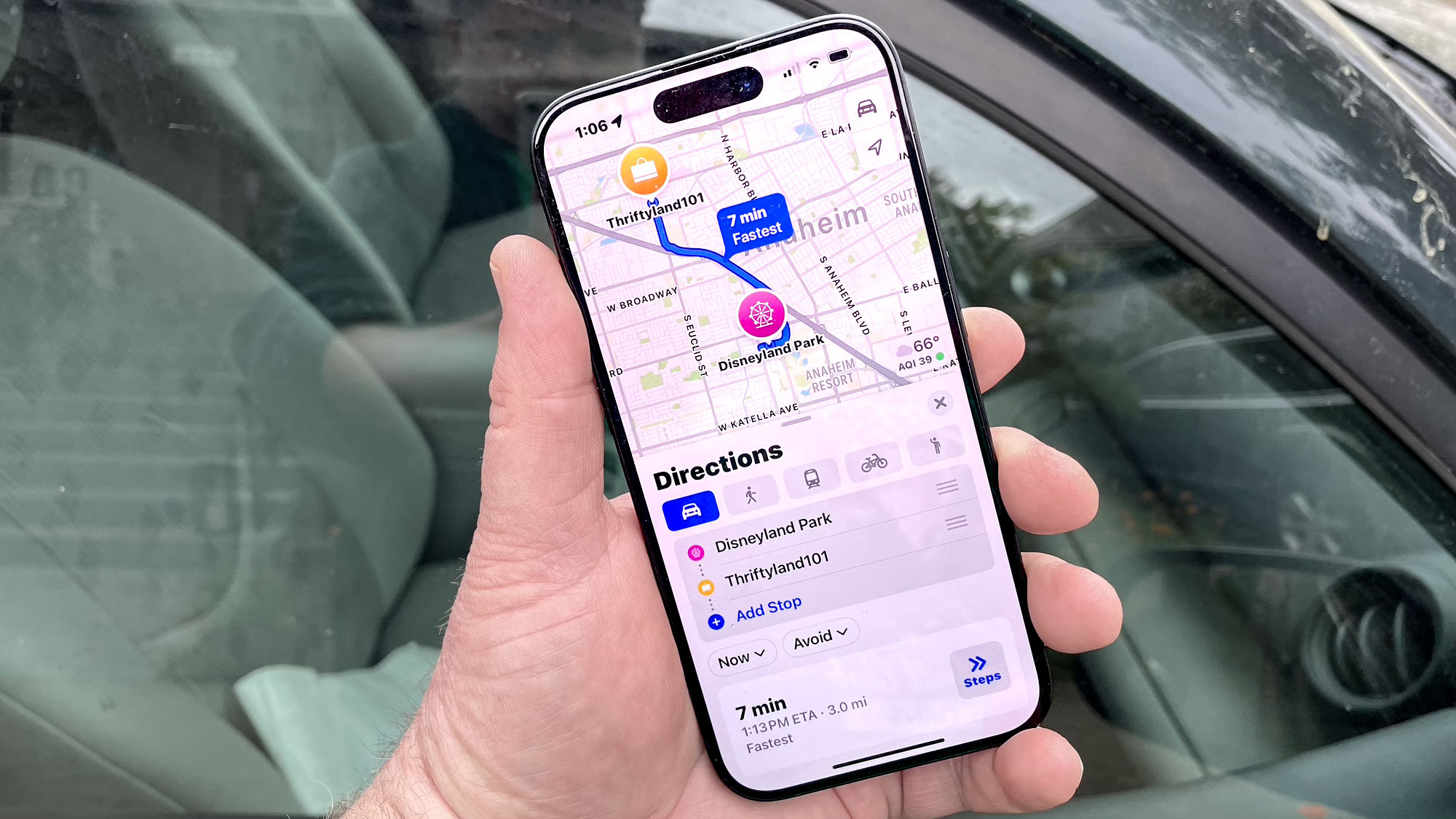
I may be in the minority opinion in the great Google Maps vs. Apple Maps debate, but on my iPhone, Apple's built-in navigation app is the one I'm most likely to launch. And that's especially true when I'm out and about and need directions to my next destination.
In my experience, Apple's turn-by-turn navigations are pretty accurate (though maybe not when it comes to finding trailheads). Even though I drive an older car that lacks a built-in infotainment system, I'm able to connect my iPhone to the car's speaker system using Bluetooth, which means Siri's directions on which way to turn at the next light come through loud and clear.
And Apple's made many improvements over the years to bolster the navigation features in its Maps app. Incident alerts can tell me when there's an accident up ahead, and the app can also suggest alternative routes when it calculates that I can save a little time.
I also appreciate that Apple Maps tells me which lane I need to be in, so I don't inadvertently peel off course when I should be heading straight ahead.
Still, as successful as Apple Maps is at getting your from Point A to Point B, it's the letting you know exactly where Point B is that the app still comes up short. I can't count the number of times that Siri will inform me I've arrived at my destination only to blow right by it, to the point where the place I should have pulled over is a receding blip in my rear-view mirror.
Fortunately, I think there's a way to fix that issue so that Apple Maps becomes more precise with letting you know when and where your journey should end. And the solution fits in very nicely with Apple's aim of building more artificial intelligence into its devices.
What Apple Intelligence can do for Maps
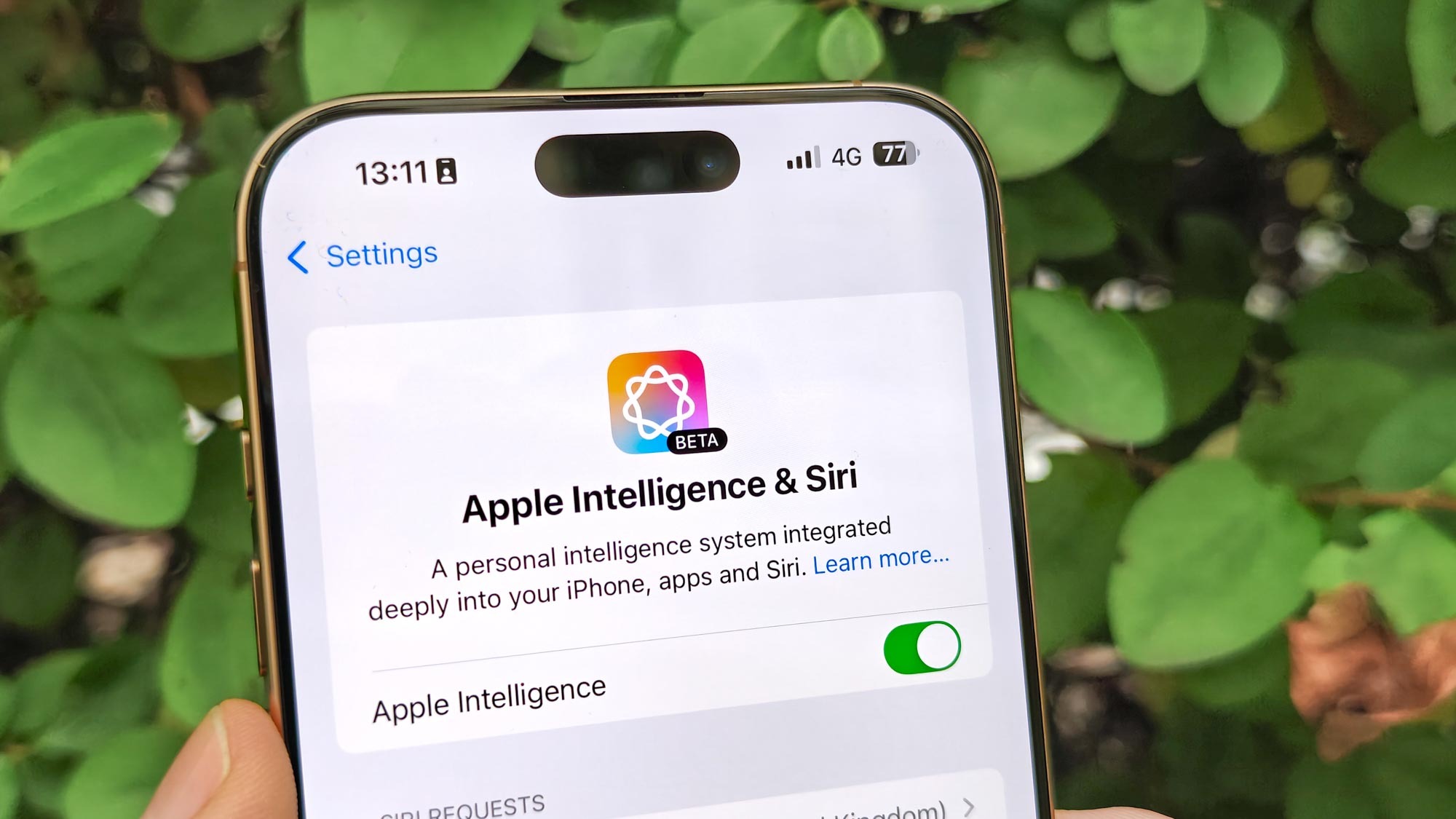
Here's an example of the exact sort of scenario I have in mind.
The other week, I took my teenage daughter on a spring break trip, which meant squiring her around to different thrift stores in the greater Southern California area. I relied on Apple Maps to guide me, but on more than one occasion, once I reached the end of the route, I blew right by the stop and wound up circling the block.
The problem is that it can be hard to spot specific addresses when you're motoring down a busy street. And Apple Maps doesn't always specify if you need to find street parking or if there's a parking lot that you should plan on turning into.
But a lot of that information is available in Maps already. The app has a Look Around feature — it's the pair of binoculars that appears on a map once you've looked up a specific location. Tap that icon, and you can get a street view image that gives you the lay of the land, from parking lots to visual landmarks that can help you pinpoint your exact destination.
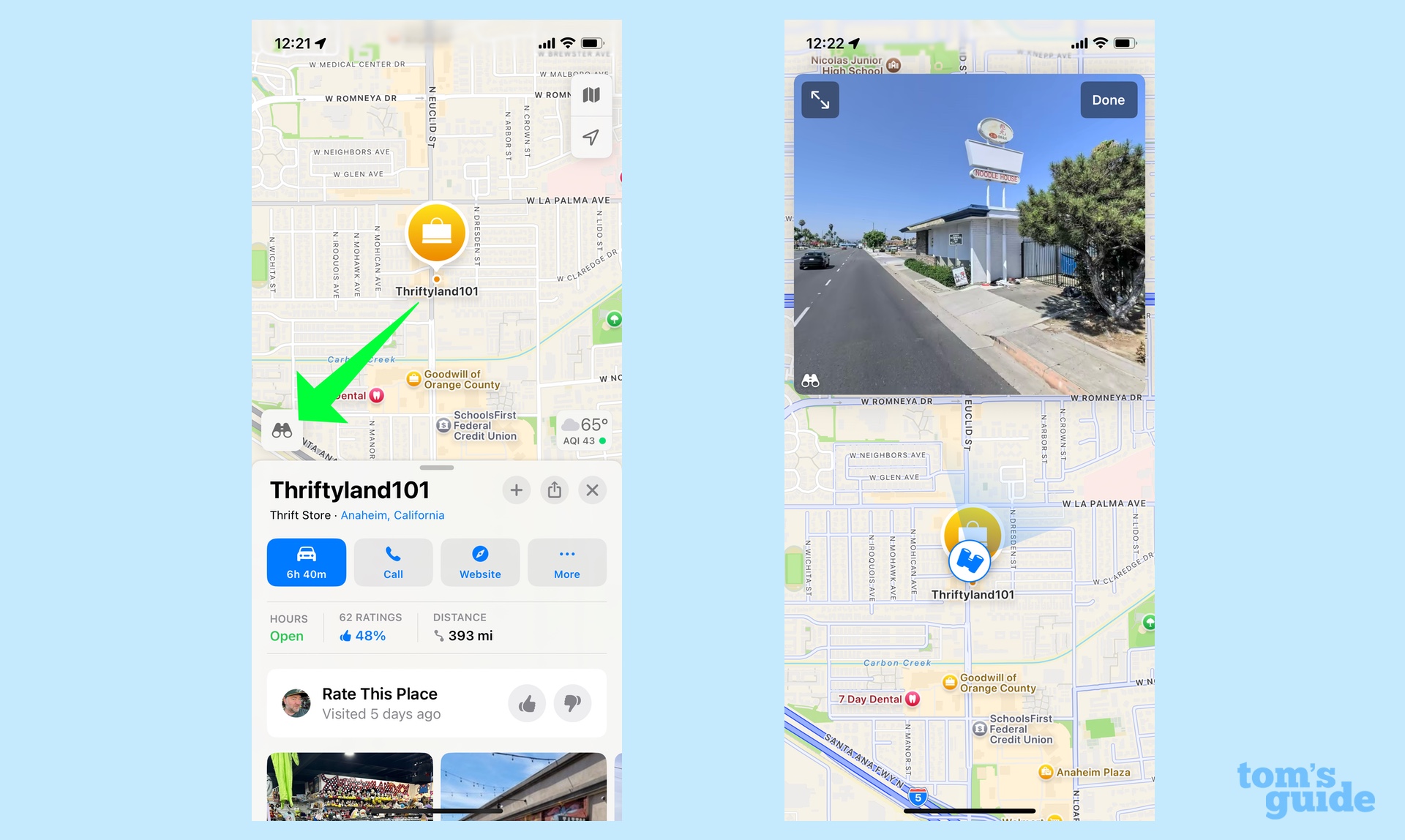
Of course, when you're behind the wheel of a car, you're not exactly in a position to tap that Look Around button and pinch and zoom in so you can get a better look at where you need to be.
But I bet artificial intelligence could do the looking for you, using image recognition to analyze the street view and relay that information to you.
Imagine turn-by-turn directions in Apple Maps augmented with Apple Intelligence. Apple's AI tools could assess the Look Around image and turn it into actionable data, telling you to look out for particular landmarks or turn into specific driveways.
You could make the feature even better by incorporating parking restrictions and other traffic data into those AI-powered instructions. Say that on every Monday, you can't park on a particular street during certain hours because of street sweeping — in this scenario, Apple Intelligence would be able to alert you before you parked somewhere you shouldn't.
An Apple Intelligence-infused version of Maps could also tackle another one of my long-standing complaints with getting directions from the app — recognizing when you're trying to find your way out of a parking garage.
On that same spring break trip, I picked up my rental car, plugged in a route from the airport to the hotel in Maps... and then gritted my teeth as I made my way through the circuitous parking garage exit while Siri ordered me to return to the route.
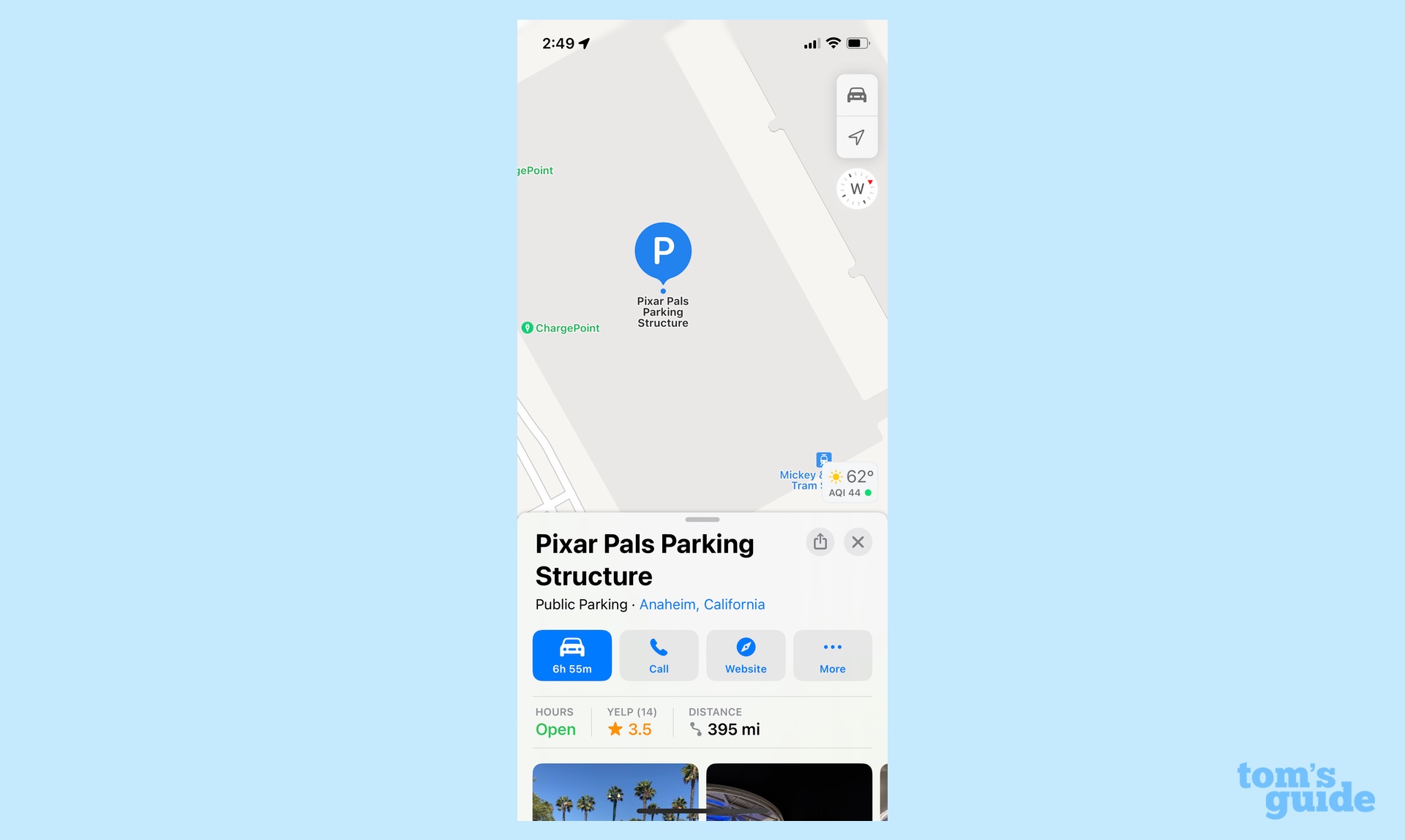
In my ideal version of Maps, Siri would recognize that I'm following the prescribed directions out of a parking garage and would cool its jets before giving me turn-by-turn instructions.
At the very least, I'd be able to alert Siri that I'm in a parking garage, and it would recognize that context — hey, remember when Apple Intelligence was going to make Siri context-aware? — to pause any navigational instructions.
Apple Maps in iOS 19
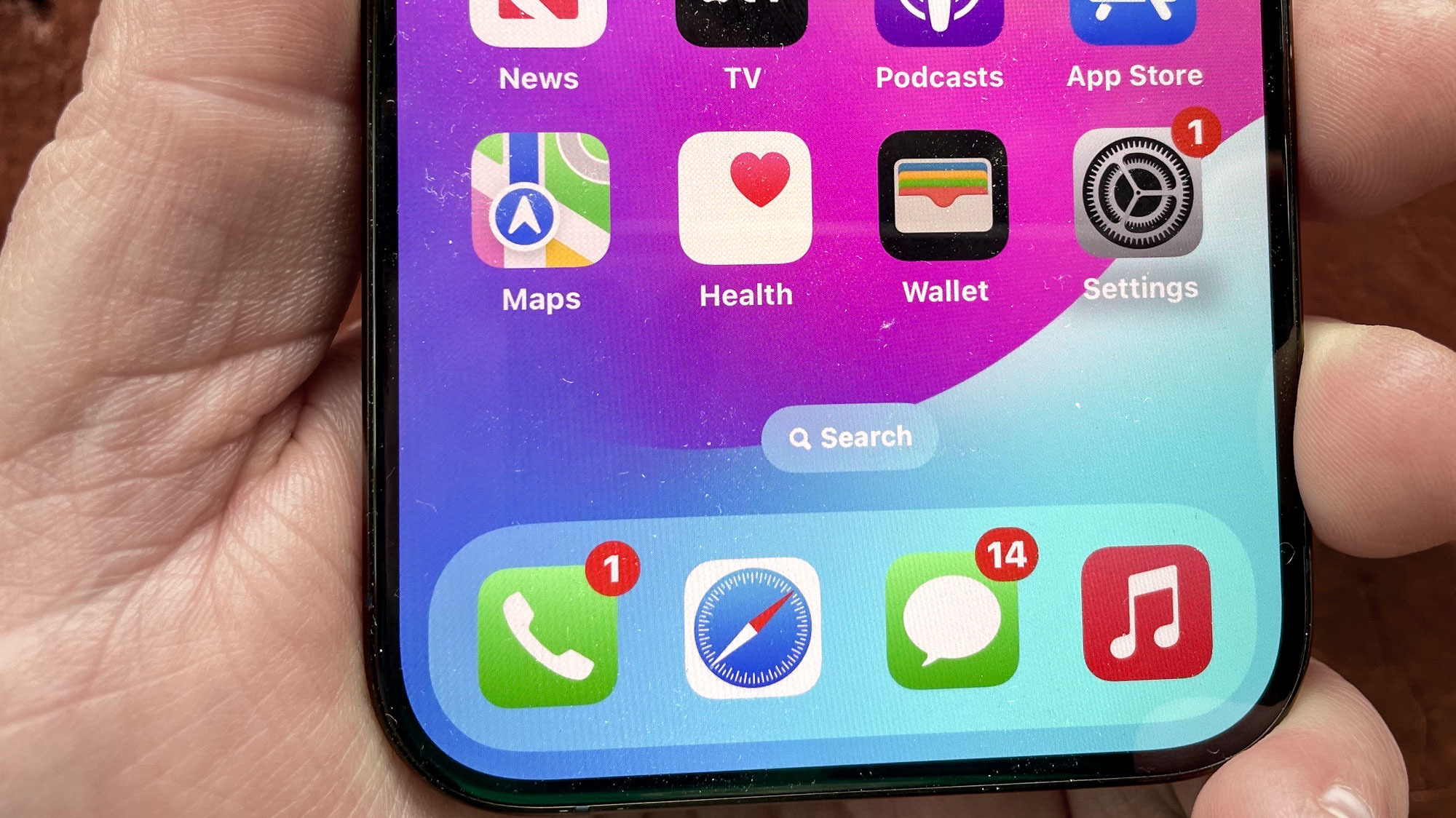
Is there any chance of these kinds of features coming to Maps at any point in the future? Beats me — Apple tends to keep its software development plans to itself. So any intention of adding AI smarts to Maps is probably being kept under lock-and-key somewhere in Cupertino.
The early rumors about iOS 19 don't provide a lot of hope for an Apple Intelligence-powered update to Maps. Right now, the focus appears to be on an interface overhaul for all of iOS 19, Maps included.
Some reports suggest that Apple really isn't focusing on adding new Apple Intelligence features this year, instead working on launching the yet-to-appear capabilities it promised with iOS 18.
If you want something to cling on to, last month Bloomberg's Mark Gurman reported that an iOS 19 focus included making use of Apple Intelligence in more apps. The report didn't get any more specific than that, but you'd certainly think that Maps would be at the head of the list of built-in apps that could benefit from some extra smarts.
More from Tom's Guide
Sign up to get the BEST of Tom's Guide direct to your inbox.
Get instant access to breaking news, the hottest reviews, great deals and helpful tips.
Philip Michaels is a Managing Editor at Tom's Guide. He's been covering personal technology since 1999 and was in the building when Steve Jobs showed off the iPhone for the first time. He's been evaluating smartphones since that first iPhone debuted in 2007, and he's been following phone carriers and smartphone plans since 2015. He has strong opinions about Apple, the Oakland Athletics, old movies and proper butchery techniques. Follow him at @PhilipMichaels.
You must confirm your public display name before commenting
Please logout and then login again, you will then be prompted to enter your display name.

